2018 Conference Presenters
The 5th International Fascia Research Congress will offer the most interesting and relevant fascia research presented by engaging experts. Our confirmed speakers currently include the following. Check back for updates and additional speakers. Learn more about FRC’s speakers »
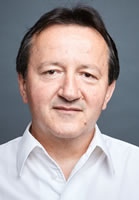 ADAMANTIOS ARAMPATZIS, PhD
ADAMANTIOS ARAMPATZIS, PhD
Humboldt-University Berlin, Department of Training and Movement Sciences, Berlin, Germany
TOPIC: Neuromuscular capacity & motor function
Adamantios Arampatzis is Professor of Movement Science, head of the Department of Training and Movement Sciences and Spokesperson of the Berlin School of Movement Science at the Humboldt-University Berlin. He received his PhD in Movement Science and Sports Medicine in 1995 and finished his Habiliation in Biomechanics in 2002 at the German Sport University Cologne. His research deals with the interaction of the central nervous and peripheral systems, how these systems develop over the lifespan and adapt to changing environmental demands. In this context the main areas of his research focus on the adaptation of the muscle-tendon unit, neuromuscular control, locomotor adaptation and dynamic stability control in healthy and pathological conditions.
His workgroup aims to identify effective mechanical stimuli to promote muscle and tendon properties, and tries to deepen the current understanding of the underlying processes of mechanotransduction. Furthermore, his group focus on the investigation of the underlying mechanisms of neuromuscular and mechanical functioning of the lower limb during steady and unsteady locomotion. The different functional organization level, e.g. muscle fascicle, muscle-tendon unit, neural control and joints are considered, aiming to understand their underlying dynamical interplay that governs effective and stable human gaits. Through an interplay of analytical, computational and experimental methods, his research group endeavour to improve the understanding of how neural pathways for locomotion are organised. In an attempt to transfer fundamental research findings to daily life, the group expand its analyses to locomotion in both steady and unsteady conditions. They believe that putting the central nervous system under stress creates the need for an improved robustness of movement, which can be studied to better understand the underlying control strategies.
Some Related Publications:
- Bohm, S., Marzilger, R., Mersmann, F., Santuz, A., Arampatzis, A. (2018): Operating length and velocity of human vastus lateralis muscle during walking and running. Scientific Reports, DOI:10.1038/s41598-018-23376-5.
- Santuz, A., Ekizos, A., Eckardt, N., Kibele, A., Arampatzis, A. (2018): Challenging locomotion: stability and modular organisation in unsteady conditions. Scientific Reports, 8:2740. DOI:10.1038/s41598-018-21018-4.
- Santuz, A., Ekizos, A., Janshen, L., Baltzopoulos , V., Arampatzis, A. (2017): The influence of footwear on the modular organization of running. Frontiers in Physiology, 8:958. Doi: 10.3389/fphys.2017.00958.
- Mersmann, F., Bohm, S., Arampatzis, A. (2017): Imbalances in the development of muscle and tendon as risk factor for tendinopathies in youth athletes: A review of current evidence and concepts of prevention. Frontiers in Physiology, 8:987. Doi: 10.3389/fphys.2017.00987.
- Mersmann, F., Bohm, S., Schroll, A., Boeth, H., Duda, G., Arampatzis, A. (2017): Muscle and tendon adaptation in adolescent athletes: A longitudinal study. Scandinavian Journal of Medicine and Science in Sports, 27: 75–82.
- Nikolaidou, M.E., Marzilger, R., Bohm, S., Mersmann, F., Arampatzis, A. (2017): Operating length and velocity of human M. vastus lateralis fascicles during vertical jumping. Royal Society Open Science, 4: 170185.
- Arampatzis, A., Schroll, A., Moreno Catalá, M., Laube, G., Schüler, S., Dreinhofer, K. (2017): A random-perturbation therapy in chronic non-specific low-back pain patients: a randomised controlled trial. European Journal of Applied Physiology, 117: 2547–2560.
- Bohm, S., Mersmann, F., Tettke, M., Kraft, M., Arampatzis, A. (2014): Human achilles tendon plasticity in response to cyclic strain: effect of rate and duration. Journal of Experimental Biology, 217, 4010-4017.
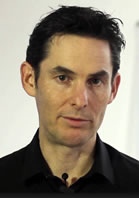 PAUL HODGES, PhD, MedDr, DSc, BPhty(Hons), FACP
PAUL HODGES, PhD, MedDr, DSc, BPhty(Hons), FACP
National Health and Medical Research Council (NHMRC), The Unversity of Queensland, Brisbane, Australia
TOPIC: Pain & movement control
Paul Hodges is the Senior Principal Research Fellow and the Director of the NHMRC Centre for Clinical Research Excellence in Spinal Pain, Injury and Health (CCRE SPINE) at the University of Queensland, Brisbane Australia. Paul has three doctorates: one in Physiotherapy and two in Neuroscience. His research blends these skills to understand pain, control of movement, and the interaction between multiple functions of the trunk muscles including spine control, continence, respiration and balance.
The large multidisciplinary Research Centre that Paul leads aims to bridge the gap between basic science and clinical practice. He has received numerous international research awards (2006 and 2011 ISSLS Prize [premier international prize for spine research from the International Society for the Study of the Lumbar Spine]; Suzanne Klein-Vogelbach Prize), leadership awards (Emerging leader in Health [Next 100 Awards], Future Summit Australian Leadership Award). Paul has published over 280 scientific papers and book chapters, and presented over 120 invited lectures at major conferences in 30 countries. He is the author of 3 clinical texts that have sold over 30,000 copies internationally. He has presented workshops for more than 5000 physiotherapists and medical practitioners in more than 40 countries. He is the lead chief investigator on the first physiotherapy based NHMRC Program Grant and received the 2011 NHMRC Achievement Award as the highest ranked NHMRC Research Fellow across disciplines in Australia.
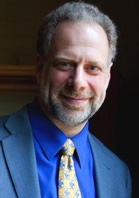 DANIEL LIEBERMAN, AB, PhD, M.Phil
DANIEL LIEBERMAN, AB, PhD, M.Phil
Department of Human Evolutionary Biology, Harvard University, Cambridge, MA
TOPIC:The Evolution of Human Walking and Running and the Cases of the IT Band and the Plantar Fascia
Daniel Lieberman is the Edwin M Lerner II Professor of Biological Science, and Chair of the Department of Human Evolutionary Biology. He received his AB from Harvard in 1986 (Summa cum laude), an M.Phil from Cambridge University in 1987, and a PhD from Harvard in 1993. His research is on how and why the human body is the way it is, with particular foci on the origins of bipedalism, how humans became such superlative endurance runners, and the evolution of the highly unusual human head.
To address these questions he combines experimental biomechanics and physiology, paleontology, and comparative anatomy. He teaches a variety of courses on human evolution, anatomy, and physiology. He has published more than 100 peer-review papers and his two most recent books are The Evolution of the Human Head (Harvard University Press, 2011), and The Story of the Human Body (Pantheon Press, 2013). He is also an avid runner.
Some Related Publications:
- Lieberman, DE (2013) The Story of the Human Body: Evolution, Health and Disease. New York: Pantheon Press.
- Lieberman, DE (2011) The Evolution of the Human Head. Cambridge, MA: Harvard University Press
- Eng CM, Arnold AS, Biewener AA, Lieberman DE. (2015) The human iliotibial band is specialized for elastic energy storage compared with the chimp fascia lata. J Exp Biol. 2218: 2382-93.
- Eng CM, Arnold AS, Lieberman DE, Biewener AA. The capacity of the human iliotibial band to store elastic energy during running. J Biomech. 2015: S0021-9290
- Roach NT, Venkadesan M, Rainbow MJ, Lieberman DE. (2013) Elastic energy storage in the shoulder and the evolution of high-speed throwing in Homo. Nature 498: 483-6.
- Roach NT, Lieberman DE. (2014) Upper body contributions to power generation during rapid, overhand throwing in humans. J Exp Biol. 217:2139-4
- Lieberman, DE (2012) What we can learn about running from barefoot running: an evolutionary medical perspective. Exerc. Sci Sports Review 40: 63-72.
- Lieberman DE., Raichlen DA. Pontzer H, Bramble D, Cutright-Smith E. (2006). The human gluteus maximus and its role in running. J Exp Biol. 209:2143-2155
- Bramble D.M., Lieberman D.E. (2004) Endurance Running and the Evolution of Homo. Nature 432: 345-352.
 CARLA STECCO, MD
CARLA STECCO, MD
Centre for Mechanics of Biological Materials, University of Padova, Italy
TOPIC: Understanding matrix biology of fascial tissues: new insights during the last 3 years
Dr. Carla Stecco is an Orthopedic Surgeon and Professor of Human Anatomy and Movement Sciences at the University of Padova, Italy. She is a founding member of both the Fascia Research Society and of the the Fascial Manipulation Association. She is a member of the Italian Society of Anatomy and Histology and of the Association Française des Morphologistes. Dr. Stecco’s scientific activity is devoted to the study of the anatomy of the human fasciae from a macroscopical, histological and physiopathological point of view. She personally made over 200 dissections of fresh cadavers for research.
Since 2000, Dr. Stecco organizes and personally holds theoretical-practical courses on the Fascial Manipulation technique both in Italy and in other countries. She is the author of more than 100 papers, among which 92 are in Pubmed; 5 are reviews. She is the author of the first photographic atlas about fasciae (Functional atlas of the human fascial system) published by Elsevier in 2015 and already translated in German, Polish and Chinese. In addition, she is the co-author of books about Fascial Manipulation translated in 11 languages and of various chapters about fascial anatomy.
Some Related Publications:
- Stecco C, Fede C, Macchi V, Porzionato A, Petrelli L, Biz C, Stern R, De Caro R. The fasciacytes: A new cell devoted to fascial gliding regulation.Clin Anat. 2018 Jul;31(5):667-676.
- Stecco C, Macchi V, Barbieri A, Tiengo C, Porzionato A, De Caro R. Hand fasciae innervation: The palmar aponeurosis. Clin Anat. 2018 Jul;31(5):677-683.
- Stecco C, Azzena GP, Macchi V, Porzionato A, Behr A, Rambaldo A, Tiengo C, De Caro R. Rectus abdominis muscle innervation: an anatomical study with surgical implications in diep flap harvesting. Surg Radiol Anat. 2017 Nov 10.
- Stecco C, Fantoni I, Macchi V, Del Borrello M, Porzionato A, Biz C, De Caro R. The role of fasciae in Civinini-Morton’s syndrome. J Anat. 2015 Nov;227(5):654-64.
- Stecco C, Sfriso MM, Porzionato A, Rambaldo A, Albertin G, Macchi V, De Caro R. Microscopic anatomy of the visceral fasciae.J Anat. 2017 Jul;231(1):121-128.
- Stecco C, Cappellari A, Macchi V, Porzionato A, Morra A, Berizzi A, De Caro R. The paratendineous tissues: an anatomical study of their role in the pathogenesis of tendinopathy. Surg Radiol Anat. 2014 Aug; 36(6):561-72.
- Stecco A, Stern R, Fantoni I, De Caro R, Stecco C. Fascial Disorders: Implications for Treatment. PM R. 2015 Jun 14. pii: S1934-1482(15)00292-0.
- P.G. Pavan, A. Stecco, R. Stern, C. Stecco, Painful connections: densification versus fibrosis of fascia, Current Pain and Headache Reports, 2014 Aug, 18(8):441, doi: 10.1007/s11916-014-0441-4, PubMed PMID: 25063495.
- T. Luomala, M. Pihlman, J. Heiskanen, C. Stecco, Case study: could ultrasound and elastography visualized densified areas inside the deep fascia?, Journal of Bodywork and Movement Therapies, 2014 Jul, 18(3):462-8, doi: 10.1016/j.jbmt.2013.11.020, PubMed PMID: 25042323.
- C. Stecco, A. Cappellari, V. Macchi, A. Porzionato, A. Morra, A. Berizzi, R. De Caro, The paratendineous tissues: an anatomical study of their role in the pathogenesis of tendinopathy, Surgical and Radiologic Anatomy, 2014 Aug, 36(6):561-72, doi: 10.1007/s00276-013-1244-8, PubMed PMID: 24318515.
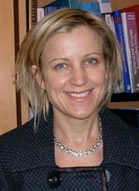 MELODY SWARTZ, PhD
MELODY SWARTZ, PhD
Institute for Molecular Engineering, University of Chicago, Chicago, IL
TOPIC: Lymphatic system, pathophysiology & immunity
Melody A. Swartz is the William B. Ogden Professor of Molecular Engineering at the University of Chicago. Her research is focused on the lymphatic system and aims to understand, modulate and exploit the complex roles of lymphatic vessels in immunity and pathophysiology, especially in cancer. Her lab draws on bioengineering approaches in cell biology and physiology, including biotransport and biomechanics, to investigate the role of lymphatic vessels in maintaining immunological tolerance and the role of lymphangiogenesis in controlling inflammation and immunity.
She then applies this knowledge to develop novel immunotherapeutic approaches in cancer, including lymph node-targeting vaccine approaches. Swartz holds a BS from the Johns Hopkins University and a PhD in Chemical Engineering from MIT under the guidance of Dr. Rakesh Jain at Harvard. She undertook postdoctoral studies at Harvard Medical School with Jeffrey Drazen and Roger Kamm before starting her independent career as an Assistant Professor in Biomedical Engineering and Chemical Engineering at Northwestern University. She then spent 12 years at the École Polytechnique Fédérale de Lausanne (EPFL), or Swiss Federal Institute of Technology, where she was a Professor of Bioengineering and later served as the Director of the Institute of Bioengineering. She moved back to the USA in 2014 to join the University of Chicago’s new Institute of Molecular Engineering, with a joint appointment in the Ben May Department of Cancer Research and appointments in the Cancer Biology and Immunology Committees. Her awards include the BMES Rita Schaffer Young Investigator Award, the Arnold & Mabel Beckman Young Investigator Award, the Wenner Prize from the Swiss Cancer League, the Wendy Chaite Leadership Award from the Lymphatic Research Foundation, and the MacArthur Foundation Fellowship.
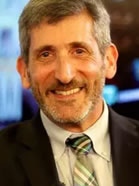 NEIL THEISE, MD
NEIL THEISE, MD
New York University School of Medicine, New York, NY
TOPIC: The Interstitium
Neil Theise, MD is senior author of the article Structure and Distribution of an Unrecognized Interstitium in Human Tissues recently published in the journal Scientific Reports. He is a diagnostic liver pathologist and adult stem cell researcher in New York City, where he is Professor of Pathology at NYU School of Medicine. His research revised understandings of human liver microanatomy which, in turn, led directly to identification of possible liver stem cell niches and the marrow-to-liver regeneration pathway. He is considered a pioneer of multi-organ adult stem cell plasticity and has published on that topic in Science, Nature, and Cell.
Subsequently, while continuing laboratory and clinical research, he has extended his work to areas of theoretical biology and complexity theory, defining a post-modern biology. These ideas suggest that alternate models of the body, other than Cell Doctrine, may be necessary to understand non-Western approaches to the body and health. Current laboratory investigations focus on nerve-stem cell interactions in human livers, melatonin-related physiology of human liver stem cell and regenerative processes, and aspects of human liver stem cell activation in acute, fulminant hepatic failure.
Some Related Publications:
- Expert review of gastroenterology & hepatology. 2018:12(6):565-573.DOI: 10.1080/17474124.2018.1481388
Acute-on-chronic liver failure 2018: a need for (urgent) liver biopsy?
van Leeuwen, Dirk J; Alves, Venancio; Balabaud, Charles; Bhathal, Prithi S; Bioulac-Sage, Paulette; Colombari, Romano; Crawford, James M; Dhillon, Amar P; Ferrell, Linda; Gill, Ryan; Guido, Maria; Hytiroglou, Prodromos; Nakanuma, Yasuni; Paradis, Valerie; Rautou, Pierre Emmanuel; Sempoux, Christine; Snover, Dale C; Theise, Neil D; Thung, Swan N; Tsui, Wilson M S; Quaglia, Alberto - Hepatology. 2018.DOI: 10.1002/hep.30093
High mobility group box-1 drives fibrosis progression signaling via the receptor for advanced glycation end-products in mice
Ge, Xiaodong; Arriazu, Elena; Magdaleno, Fernando; Antoine, Daniel J; Dela Cruz, Rouchelle; Theise, Neil; Nieto, Natalia - Modern pathology. 2018.DOI: 10.1038/s41379-018-0048-0
Progression and regression of fibrosis in viral hepatitis in the treatment era: the Beijing classification
Theise, Neil D; Jia, Jidong; Sun, Yameng; Wee, Aileen; You, Hong - Modern pathology. 2018:(pp(1-10):1-10.DOI:
Progression and regression of fibrosis in viral hepatitis in the treatment era: the Beijing classification
Theise, N D; Jia, J; Sun, Y; Wee, A; You, H - Scientific reports. 2018:8(1):4947-4947.DOI: 10.1038/s41598-018-23062-6
Structure and Distribution of an Unrecognized Interstitium in Human Tissues
Benias, Petros C; Wells, Rebecca G; Sackey-Aboagye, Bridget; Klavan, Heather; Reidy, Jason; Buonocore, Darren; Miranda, Markus; Kornacki, Susan; Wayne, Michael; Carr-Locke, David L; Theise, Neil D - Virchows archive. 2018.DOI: 10.1007/s00428-018-2340-2
Regression of human cirrhosis: an update, 18 years after the pioneering article by Wanless et al
Hytiroglou, Prodromos; Theise, Neil D
 FRANK WILLARD, PhD
FRANK WILLARD, PhD
Dept. of Anatomy, University of New England, College of Osteopathic Medicine, Portland, ME
TOPIC: Spinal anatomy & neurology of spine pain
Frank Willard is Professor of Anatomy and Neuroanatomy at the College of the Osteopathic Medicine of the University of New England (US). He also serves as a member of the teaching board at the European School of Osteopathy and the British College of Osteopathic Medicine. Gaining his PhD in Anatomy and Neurobiology from the University of Vermont College of Medicine in 1981, his research focuses on spinal anatomy and the neurology of spine pain.
He is widely published and primary editor of the Basic Sciences section in the recently published third edition of Foundations of Osteopathic Medicine.
Some Related Publications:
- Schuenke, M., Towns, L., and Willard, F.H., concepts in anatomy and embryology in Osteopathic Medicine, In: Seffinger, M., The Foundations for Osteopathic Medicine, 3ed. Lippincott, Williams & Wilkins, Philadelphia, (in press 2018)
- Willard, F.H., Fossum, C., And Standley, P.R., The Fascial System of the Body, In: Seffinger, M., The Foundations for Osteopathic Medicine, 3ed. Lippincott, Williams & Wilkins, Philadelphia, (in press 2018)
- Ettlinger, H. and Willard, F.H., Anatomy and physiology of the lymphatic system, In: Seffinger, M., The Foundations for Osteopathic Medicine, 3ed. Lippincott, Williams & Wilkins, Philadelphia, (in press 2018)
- Willard, F.H., Mechanics of Respiration, In: Seffinger, M., In: The Foundations for Osteopathic Medicine, 3ed. Lippincott, Williams & Wilkins, Philadelphia, (in press 2018)
- Willard, F.H., Autonomic nerve system, In: The Foundations for Osteopathic Medicine, 3ed. Lippincott, Williams & Wilkins, Philadelphia, (in press 2018)
- Willard, F.H., Nociception and pain, In: The Foundations for Osteopathic Medicine, 3ed. Lippincott, Williams & Wilkins, Philadelphia, (in press 2018)
- Schuenke, M. and Willard, F.H., Das Fasziensystem: Embryologie, Organisation und Zusammensetzung, Kapitel 8:69-91, In: Mayer, J. and Standen, C., Lehrbuch Osteopathische Medizin, Elsevier, Munchen, GR (2017)
- Vleeming, A., Schuenke, M., and Willard, F.H., 2014 The functional coupling of the deep abdominal and paraspinal muscles: The effects of simulated paraspinal muscle contraction on force transfer to the middle and posterior layer of the thoracolumbar fascia, Journal of Anatomy J Anat 225(4):447-465
- Willard FH, Schuenke M. 2013. The neuroanatomy of female pelvic pain. In: Bailey A, Bernstein C, editors. Pain in Women. New York: p 17-58.
- Willard FH. 2012. Somatic fascia. In: Schleip R, editor. Fascia: The tensional network of the human body. New York: Elsevier; p 11-8.
- Willard FH. 2012. Visceral fascia. In: Schleip R, editor. Fascia: The tensional network of the human body. New York: Elsevier; p 53-6.
- Willard FH, Vleeming A, Schuenke MD, Danneels L, Schleip R. 2012. The thoracolumbar fascia: anatomy, function and clinical considerations. J Anat 221(6):507-36.
- Vleeming A, Schuenke M, Masi AT, Carreiro JE, Danneels LA, Willard FH. 2012. The sacroiliac joint: an overview of anatomy, function and potential clinical implications. J Anat 221(6):537-67.
- Schuenke M, Vleeming A, Van Hoof T, Willard FH. 2012. Anatomical constituents of load transfer through the lateral margin of the thoracolumbar fascia: a description of the lumbar triangle and its relationship with the lateral raphe. J Anat 221(6):568-76.
- Willard FH, Yin W, and Philpot P. 2011. The medial branch of the dorsal primary rami: correlation between visual observation and fluoroscopic landmarks [abstract]. Pain Medicine 12(3) 528, 2011
 L’HOCINE YAHIA, PhD
L’HOCINE YAHIA, PhD
Polytechnique Montreal, Montreal, Quebec, Canada
TOPIC: Fundamental biophysics of the human spine – beyond the classical biomechanics
Dr. L’Hocine Yahia graduated from the University of Orleans in 1977 with a degree in Mechanical Engineering and earned a PhD in Biomedical Engineering from the Compiegne University of Technology (France) in 1980. He has been tenured faculty at Polytechnique Montreal (Canada) for 35 years. He is also an associated professor in Biomaterials and Biomechanics at the Department of Surgery of Montreal University. Dr. Yahia is currently the director of the Innovation and Bioperformance Analysis Laboratory.
His main interests include musculoskeletal biomechanics, the properties of ligaments and fascia, the living systems from Prigogine’s perspective, the redundancy problems in biomechanics, and the biomimetics approach in biomaterials. Recent research topics include: bioengineering thermodynamics for biosystems, biotensegrity and constructal approach in biomechanics and spinal biomechanics. He also serves as a Member of Scientific Advisory Board of Victhom Human Bionics and Begama Technologies Inc. Dr. Yahia holds 10 patents, has written 4 books and more than 200 papers and is a popular presenter at conferences.
Some Related Publications:
- L’Hocine Yahia, Nicholas Newman & Charles-Hilaire Rivard. Neurohistology of lumbar spine ligaments. Acta Orthopaedica Scandivanica. Volume 59, Pages 508-512, 1988
- Yahia, LH, Audet, J, and Drouin, G (1991). Rheological Properties of the Human Lumbar Spine Ligaments. Journal of Biomedical Engineering 13:399-406.
- L’Hocine Yahia, Souad Rhalmi, Nicolas Newman & Marc Isler. Sensory innervation of human thoracolumbar fascia. An immunohistochemical study. Acta Orthopaedica Scandivanica. Volume 63, Pages 195-197, 1992.
- Yahia, L.H., Pigeon, P., & DesRosiers, E.A. (1993). Viscoelastic properties of the human lumbodorsal fascia. J Biomed Eng, 15 (5), 425-429.
- Beauséjour M, Aubin, C-É. Aubin, Mitnitski A.B., Yahia L’H, Feldman, A. Biomechanical modeling of motor control for the coordination of the spine during weight lifting. Journal of Biomechanics, Volume 31, Supplement 1, July 1998, Page 138
- Mitnitski A, Yahia LH, Newman NM, Gracovetsky SA and Feldman AG. Coordination between Lumbar Spine Lordosis and Trunk Angle during Weight Lifting. Clinical Biomechanics 13(2) : 121-127, 1998
- Beauséjour M, A Feldman et al. Biomechanical modeling of the control of trunk muscles
- Studies in health technology and informatics 59:150-153 January 1999
- Pascale Pigeon L’Hocine Yahia Arnold B. Mitnitski, Anatol G. Feldman. Superposition of independent units of coordination during pointing movements involving the trunk with and without visual feedback. Exp Brain Res (2000) 131:336–349
- Bougherara H, Klika V, Marsík F, Marík IA, Yahia L. New predictive model for monitoring bone remodeling.J Biomed Mater Res A. 2010 Oct;95(1):9-24.
- Marine Guillemot & L’Hocine Yahia. Approche Thermodynamique dans la Modélisation des processus Biologiques. Techn Report, LIAB, EPM, 2013
- Miroslav Grmela, Giuseppe Grazzini , Umberto Lucia and L’Hocine Yahia. Multiscale Mesoscopic Entropy of Driven Macroscopic Systems. Entropy 2013, 15(11), 5053-5064;
